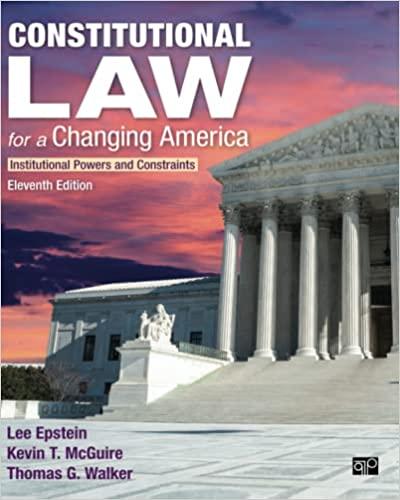Answered step by step
Verified Expert Solution
Question
1 Approved Answer
On 1 April 2010, the Older Persons Act 13 of 2006 (the Act) came into effect. The purpose of the act is to: To deal
On 1 April 2010, the Older Persons Act 13 of 2006 (the Act) came into effect. The purpose of the act is to: "To deal effectively with the plight of older persons by establishing a framework aimed at the empowerment and protection of older persons and at the promotion and maintenance of their status, rights, well-being, safety and security; and to provide for matters connected therewith." To achieve these objectives, the Act, among other things, establishes residential facilities. Section 21 of the Act provides a process of applying for admission to these residential facilities. Section 25(5) defines the categories of older persons that qualifies for care in the residential facilities. The following categories of persons qualifies for care in the residential facilities in terms of section 25(5): An older person who (a) has his or her income, assets or old age grant taken against his or her wishes or who suffers any other economic abuse; (b) has been removed from his or her property against his or her wishes or who 30 has been unlawfully evicted from any property occupied by him or her; (c) has been neglected or abandoned without any visible means of support; (d) lives or works on the streets or begs for a living; (e) abuses or is addicted to a substance and without any support or treatment for such substance abuse or addiction; (f) lives in circumstances likely to cause or to be conducive to seduction, abduction or sexual exploitation; (g) lives in or is exposed to circumstances which may harm that older person physically or mentally; or (h) is in a state of physical, mental or social neglect. David Chabalala, a 61-year-old male resides in a village of Giyani. He has no formal education and has never had formal employment. Mr. Chabalala survives on the old age grant. Mr. Chabalala has been wheel chair bound since 2008, after he was involved in a motor vehicle accident. Mr. Chabalala relies on his daughter, Thabelo, to collect the old age grant. However, after collecting the old age grant, Thabelo keeps the money for herself. Thabelo argues that she keeps the money because Mr. Chabalala stays in her house and that she is paying herself for taking care of him. After an investigation by a social worker it was determined that: (a) Thabelo has the habit of leaving Mr. Chabalala alone for weeks without food. (b) And sometimes he is left without electricity. (c) Mr. Chabalala is not able to cook for himself. (d) Mr. Chabalala has been neglected. After assessing the situation, the social worker decided that the only way to resolve the situation is to admit Mr. Chabalala into a residential facility. However, Mr. Chabalala is refused admission into the residential facility because he is not an "Older Person". In terms of the Act "Older Persons" is defined as "a person who, in the case of a male, is 65 years of age or older and, in the case of a female, is 60 years of age or older". After, he is refused admission, Mr Chabalala approaches you to initiate proceedings against the Minister of Social Development. You initiate the proceedings arguing that the refusal to admit Mr Chabalala amounts to unfair discrimination and violates the right to Health care, food, water and social security. Draft Heads of argument to persuade the court that the refusal to admit Mr Chabalala amounts to unfair discrimination and violates the right to Health care, food, water and social security. Explain the content of the rights claimed and persuade the Judge that the rights have been infringed and there is no reasonable justification for the infringement. Marks will be allocated in the following manner: Communication skills grammar, 10% spelling and language conventions Presentation- complying with the prescribed structure for Heads of argument; and accurate table of content and Bibliography 15% Insight and Understanding of the issue to be resolved; Ability to Structure and Organise the Heads of argument in a coherent manner; and Evidence of incisive critical analysis of sources 75% TOTAL = 100
Step by Step Solution
There are 3 Steps involved in it
Step: 1

Get Instant Access to Expert-Tailored Solutions
See step-by-step solutions with expert insights and AI powered tools for academic success
Step: 2

Step: 3

Ace Your Homework with AI
Get the answers you need in no time with our AI-driven, step-by-step assistance
Get Started


